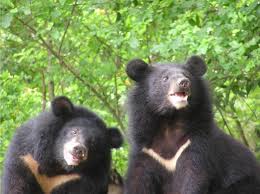 A new survey conducted by scientists frome the Wildlife Conservation Society (WCS), and supported by the U.S. Agency for International Development (USAID), pubblished by Sciencie Daily, reveals that large mammals, including Asiatic black bears, gray wolves, markhor goats, and leopard cats are surviving in parts of Afghanistan after years of conflict.
A new survey conducted by scientists frome the Wildlife Conservation Society (WCS), and supported by the U.S. Agency for International Development (USAID), pubblished by Sciencie Daily, reveals that large mammals, including Asiatic black bears, gray wolves, markhor goats, and leopard cats are surviving in parts of Afghanistan after years of conflict.
The field team used camera-trap surveys, transect surveys, and DNA identification of scat samples in the first wildlife update in the conflict-plagued eastern province of Nuristan since 1977. The surveys, conducted between 2006 and 2009 covering an area of 1,100 square kilometers, confirmed the presence of several important species in the region's montane deciduous and coniferous forests, including the first documented sighting of the common palm civet in Afghanistan. The results mirror studies in other parts of Afghanistan indicating that wildlife continues to survive despite deforestation, habitat degradation, and decades with the absence of rule of law. The study appears in the journal Oryx.
"This ongoing work in Afghanistan by WCS, supported by USAID, ensures the protection of wildlife and has a long-term positive effect on local communities - said Steven Sanderson, of WCS - The surveys confirm the presence of globally important species in the area, despite indications of habitat loss and uncontrolled hunting. This highlights the need for targeted conservation programs to protect forest resources -- including wildlife -- that provide livelihoods for people. Sustainable natural resource management, including teaching new skills and building governance structures in local communities."


